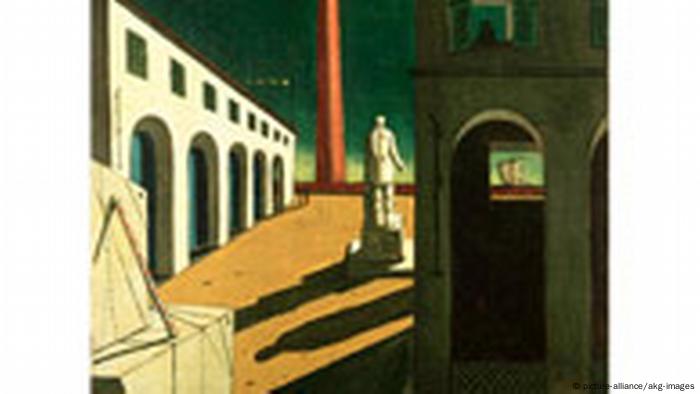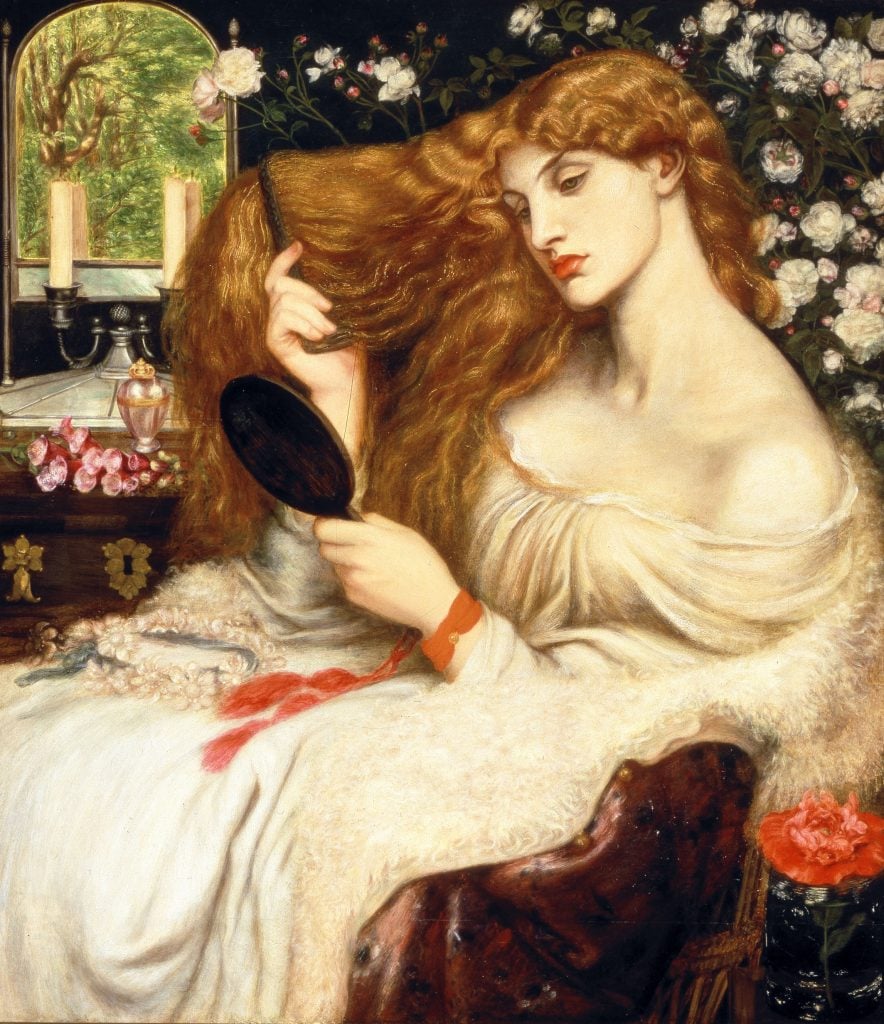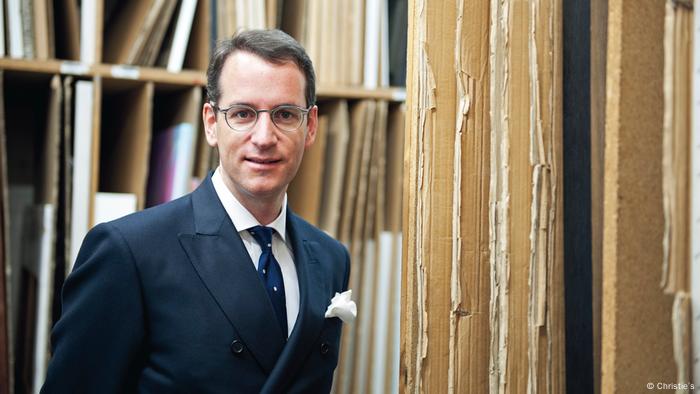Art
COVID shakes up the art market – DW (English)
Lockdown sales slump pushes galleries, fairs, and auction houses towards non-traditional territory: the internet.
For art expert Dirk Boll, the art market is on the verge of a “turning point.” He told DW that the COVID-19 crisis had had a “catalytic effect” in transforming the tradition-bound industry, with digitalization moving “at turbo speed.”
Boll is an art historian and one of four presidents, who with managing director Guillaume Cerutti, head the London auction house Christie’s.
Boll recently published a book in German on economic crises and new art markets, in which he analysed the impact of recent economic crises on the art market. With a view of the ongoing COVID-19 pandemic, his book is titled, Was ist diesmal anders? (‘What’s different this time?’).
It was already evident after the first lockdown in spring 2020 that COVID had the art world in its grip, as shown, for example, by the mid-year survey of 795 galleries from around 60 countries.
Conducted by Art Basel and the Swiss bank UBS, the study revealed that gallery sales worldwide had shrunk by more than a third compared to 2019. The mood in the galleries was also somber: around half of those affected feared a further decline in sales.
The new lockdown is likely to fuel this pessimism even further. “The pandemic has presented the art market — and the gallery sector in particular — with some of its greatest challenges,” the study’s director, Irish art economist Clare McAndrew concluded.
Unabated demand for art
The auction market has also suffered, and continues to suffer from the pandemic, albeit to a lesser extent. According to calculations by the French online portal ArtMarket.com, Less than one-fifth of artworks went under the hammer in the auction houses compared to the previous year. Sales even slumped by almost half until August.
“The auction houses have succeeded in continuing their activity to a large extent,” ArtMarket.com managing director Thierry Ehrmann stated on its website. He also said art market prices had “by no means systematically” fallen, as evidenced, for example, by the sale of Giorgio de Chirico’s painting Il pomeriggio di Arianna (1913) for $15.9 million (approximately 13 million euros) at Sotheby’s in New York on October 29, 2020. In fact, he said, demand for masterpieces continued unabated.
So, what does the pandemic mean for the art market? While many art fairs, auctions and exhibitions were canceled because of the lockdown in spring this year, a new start seemed a long way off even in autumn. The end of major art events hit dealers hard, because for many traders, fairs are the most important sales platforms. The industry thus shifted its trading hub to the internet as far as possible. Online galleries sprang up like mushrooms. Art fairs such as Art Basel and Art Cologne opened “online viewing rooms,” to varying degrees of success. Boll explained that those who were already big were also able to invest in new technology faster and on a larger scale.


A 1915 painting by Giorgio de Chirico titled ‘Fear of Waiting’
Online art trade booming
Art buyers and collectors were also contributing towards making the offer more conservative, according to art expert Boll. At digital fair appearances and in online viewing rooms, newer and lesser-known players were having a harder time making themselves visible. As Kristian Jarmuschek , chairman of the Federal Association of German Galleries (BVDG), put it in an interview with DW, “Well-known artists benefit because brands sell better, as we all know!” The losers are smaller galleries that don’t yet have any artist brands on offer, but instead do basic work, like devoting themselves to the development ofyounger and unknown artists.
Before the crisis, the internet was mainly used as a showcase for art. Sales were negligible: of the $64.1 billion in global art market sales last year, according to Artmarket, the online sector accounted for 10%. But in the first quarter of 2020, that share skyrocketed to 37%.
The digital market has already departed from its niche status and become a serious contender, at least in the auction trade. “We expect to sell about half of all our objects via online-only auctions in 2021,” Boll said, adding that auction houses had already significantly raised the value thresholds of their sold objects, which he saw as a sign of buyers’ growing confidence in digital art sales.
With the new lockdown, some dealers’ hopes for 2021 could evaporate. After all, at mid-year, half of the galleries surveyed were still expecting sales to rise in the new year. Meanwhile, Germany’s gallery owners currently have little reason to complain, the BVDG’s Jarmuschek reiterated.
No gallery has yet had to close due to COVID. Rather, he said, the lockdown has benefited traditional gallery work. “We can make time for our customers, who in turn have more time for art.”
Adapted from German by Brenda Haas.
Art
Art Bites: Millais's Muse Fell Ill After Posing for 'Ophelia' – artnet News
What’s the deal with Leonardo’s harpsichord-viola? Why were Impressionists obsessed with the color purple? Art Bites brings you a surprising fact, lesser-known anecdote, or curious event from art history. These delightful nuggets shed light on the lives of famed artists and decode their practices, while adding new layers of intrigue to celebrated masterpieces.
Beauty is pain. Elizabeth Siddal, one of art history’s most famous muses, had intimate experience with this adage. Siddal first met artist Walter Deverell in 1849, the year she turned 20, while working for a London milliner and soon became a favored model of the Pre-Raphaelite Brotherhood artists. She was featured in William Holman Hunt’s A Converted British Family Sheltering a Christian Missionary from the Persecution of the Druids (1849–50) and most famously in John Everett Millais’s Ophelia (1851–52). It was during her contribution to the latter painting, that she fell ill.
Beauty was a matter of pain for Millais, too. In a rare move for artists of the era, he spent five months painting scenery for Ophelia in a hut along Surrey’s Hogsmill River. “My martyrdom is more trying than any I have hitherto experienced,” Millais remarked, describing “muscular” flies and powerful winds. “The painting of a picture under such circumstances would be a greater punishment to a murderer than hanging.”
The Tate notes that Millais devoted only four months to portraying Ophelia herself. Siddal agreed to stand in for the doomed beauty. She spent long hours in a bathtub at the artist’s Gower Street studio, wearing a cheap gown Millais acquired. “Today I have purchased a really splendid lady’s ancient dress—all flowered over in silver embroidery,” he wrote. “It cost me, old and dirty as it is, four pounds.” The dress is still in the Tate.
Millais arranged oil lamps beneath Siddall’s tub to keep her bathwater warm. One of those lamps went out. Millais didn’t notice, and Siddal didn’t complain—by then she knew that beauty means pain. The water grew so frigid that Siddall fell ill with pneumonia. Siddall’s father ordered Millais to cover her extensive medical bills. The artist allegedly made off paying the least possible amount.


Siddal in Dante Gabriel Rossetti’s Lady Lilith (1866–68; 1872–73). Collection of the Delaware Art Museum.
Siddal made a full recovery from her Ophelia-induced illness, but the bout proved foreshadowing. Siddall likely met Pre-Raphaelite Brotherhood painter Dante Gabriel Rossetti while they both sat for Deverell’s massive oil painting Twelfth Night, Act II, Scene IV (1850). Siddall fell for Rossetti, who made her his sole model. In 1853, Rossetti took Siddall on as an art student. He taught her to draw, and advised her to drop the last letter from her surname. By 1857, Siddal became one of the only women to exhibit alongside the Pre-Raphaelites. Over the next 15 years, she produced numerous drawings, paintings, and poems, often inspired by Lord Tennyson, her favorite poet since discovering his verses on a butter wrapping as a kid.
As time wore on, Siddal grew fearful that her philandering beau would abandon her for a younger muse. While Rossetti resisted their marriage due to Siddal’s working class background, the two wed in 1860. It wasn’t enough to stave off her consumptive melancholy. Siddal died from a laudanum overdose, a rumored suicide, in 1862—decades before 1894, when Ophelia was included the original Henry Tate gift. It’s one of the museum’s most popular paintings today, due in no small part to Siddal’s sublime beauty, the pain it brought her.
Follow Artnet News on Facebook:
Want to stay ahead of the art world? Subscribe to our newsletter to get the breaking news, eye-opening interviews, and incisive critical takes that drive the conversation forward.
Art
Striking Art Gallery of Ontario workers reach tentative deal with museum – Toronto Star


/* OOVVUU Targeting */
const path = ‘/news/canada’;
const siteName = ‘thestar.com’;
let domain = ‘thestar.com’;
if (siteName === ‘thestar.com’)
domain = ‘thestar.com’;
else if (siteName === ‘niagarafallsreview.ca’)
domain = ‘niagara_falls_review’;
else if (siteName === ‘stcatharinesstandard.ca’)
domain = ‘st_catharines_standard’;
else if (siteName === ‘thepeterboroughexaminer.com’)
domain = ‘the_peterborough_examiner’;
else if (siteName === ‘therecord.com’)
domain = ‘the_record’;
else if (siteName === ‘thespec.com’)
domain = ‘the_spec’;
else if (siteName === ‘wellandtribune.ca’)
domain = ‘welland_tribune’;
else if (siteName === ‘bramptonguardian.com’)
domain = ‘brampton_guardian’;
else if (siteName === ‘caledonenterprise.com’)
domain = ‘caledon_enterprise’;
else if (siteName === ‘cambridgetimes.ca’)
domain = ‘cambridge_times’;
else if (siteName === ‘durhamregion.com’)
domain = ‘durham_region’;
else if (siteName === ‘guelphmercury.com’)
domain = ‘guelph_mercury’;
else if (siteName === ‘insidehalton.com’)
domain = ‘inside_halton’;
else if (siteName === ‘insideottawavalley.com’)
domain = ‘inside_ottawa_valley’;
else if (siteName === ‘mississauga.com’)
domain = ‘mississauga’;
else if (siteName === ‘muskokaregion.com’)
domain = ‘muskoka_region’;
else if (siteName === ‘newhamburgindependent.ca’)
domain = ‘new_hamburg_independent’;
else if (siteName === ‘niagarathisweek.com’)
domain = ‘niagara_this_week’;
else if (siteName === ‘northbaynipissing.com’)
domain = ‘north_bay_nipissing’;
else if (siteName === ‘northumberlandnews.com’)
domain = ‘northumberland_news’;
else if (siteName === ‘orangeville.com’)
domain = ‘orangeville’;
else if (siteName === ‘ourwindsor.ca’)
domain = ‘our_windsor’;
else if (siteName === ‘parrysound.com’)
domain = ‘parrysound’;
else if (siteName === ‘simcoe.com’)
domain = ‘simcoe’;
else if (siteName === ‘theifp.ca’)
domain = ‘the_ifp’;
else if (siteName === ‘waterloochronicle.ca’)
domain = ‘waterloo_chronicle’;
else if (siteName === ‘yorkregion.com’)
domain = ‘york_region’;
let sectionTag = ”;
try
if (domain === ‘thestar.com’ && path.indexOf(‘wires/’) = 0)
sectionTag = ‘/business’;
else if (path.indexOf(‘/autos’) >= 0)
sectionTag = ‘/autos’;
else if (path.indexOf(‘/entertainment’) >= 0)
sectionTag = ‘/entertainment’;
else if (path.indexOf(‘/life’) >= 0)
sectionTag = ‘/life’;
else if (path.indexOf(‘/news’) >= 0)
sectionTag = ‘/news’;
else if (path.indexOf(‘/politics’) >= 0)
sectionTag = ‘/politics’;
else if (path.indexOf(‘/sports’) >= 0)
sectionTag = ‘/sports’;
else if (path.indexOf(‘/opinion’) >= 0)
sectionTag = ‘/opinion’;
} catch (ex)
const descriptionUrl = ‘window.location.href’;
const vid = ‘mediainfo.reference_id’;
const cmsId = ‘2665777’;
let url = `https://pubads.g.doubleclick.net/gampad/ads?iu=/58580620/$domain/video/oovvuu$sectionTag&description_url=$descriptionUrl&vid=$vid&cmsid=$cmsId&tfcd=0&npa=0&sz=640×480&ad_rule=0&gdfp_req=1&output=vast&unviewed_position_start=1&env=vp&impl=s&correlator=`;
url = url.split(‘ ‘).join(”);
window.oovvuuReplacementAdServerURL = url;
TORONTO – The union representing hundreds of striking Art Gallery of Ontario workers says it’s reached a tentative deal with the museum.
The Ontario Public Service Employees Union says they reached the deal late last night, after 16 hours of bargaining.
function buildUserSwitchAccountsForm()
var form = document.getElementById(‘user-local-logout-form-switch-accounts’);
if (form) return;
// build form with javascript since having a form element here breaks the payment modal.
var switchForm = document.createElement(‘form’);
switchForm.setAttribute(‘id’,’user-local-logout-form-switch-accounts’);
switchForm.setAttribute(‘method’,’post’);
switchForm.setAttribute(‘action’,’https://www.thestar.com/tncms/auth/logout/?return=https://www.thestar.com/users/login/?referer_url=https%3A%2F%2Fwww.thestar.com%2Fnews%2Fcanada%2Fstriking-art-gallery-of-ontario-workers-reach-tentative-deal-with-museum%2Farticle_f93dfb4a-141d-5144-bb61-41d842fc7153.html’);
switchForm.setAttribute(‘style’,’display:none;’);
var refUrl = document.createElement(‘input’); //input element, text
refUrl.setAttribute(‘type’,’hidden’);
refUrl.setAttribute(‘name’,’referer_url’);
refUrl.setAttribute(‘value’,’https://www.thestar.com/news/canada/striking-art-gallery-of-ontario-workers-reach-tentative-deal-with-museum/article_f93dfb4a-141d-5144-bb61-41d842fc7153.html’);
var submit = document.createElement(‘input’);
submit.setAttribute(‘type’,’submit’);
submit.setAttribute(‘name’,’logout’);
submit.setAttribute(‘value’,’Logout’);
switchForm.appendChild(refUrl);
switchForm.appendChild(submit);
document.getElementsByTagName(‘body’)[0].appendChild(switchForm);
function handleUserSwitchAccounts()
window.sessionStorage.removeItem(‘bd-viafoura-oidc’); // clear viafoura JWT token
// logout user before sending them to login page via return url
document.getElementById(‘user-local-logout-form-switch-accounts’).submit();
return false;
buildUserSwitchAccountsForm();
console.log(‘=====> bRemoveLastParagraph: ‘,0);
Art
Striking Art Gallery of Ontario workers reach tentative deal with museum – The Globe and Mail


The union representing hundreds of striking Art Gallery of Ontario workers says it’s reached a tentative deal with the museum.
The Ontario Public Service Employees Union says they reached the deal late last night, after 16 hours of bargaining.
The downtown Toronto museum has been closed for a month while more than 400 workers represented by OPSEU – including assistant curators, archivists and food and hospitality staff – were on strike.
They walked off the job after rejecting an offer from the AGO, which the union said failed to address key issues such as wage increases, protections for part-time workers and contracting out positions.
The union didn’t share details about their new tentative deal, which will soon go to a vote among the members, and the AGO did not immediately respond to a request for comment.
No information was immediately available about when the AGO would reopen.
The union has previously said that part-time employees make up more than 60 per cent of the AGO’s work force, and they earn an average of $34,380 per year.
-
Media19 hours ago
B.C. online harms bill on hold after deal with social media firms
-
Media24 hours ago
Trump poised to clinch US$1.3-billion social media company stock award
-
Real eState20 hours ago
Montreal tenant forced to pay his landlord’s taxes offers advice to other renters
-



 Investment20 hours ago
Investment20 hours agoMOF: Govt to establish high-level facilitation platform to oversee potential, approved strategic investments
-



 Politics19 hours ago
Politics19 hours agoPolitics Briefing: Younger demographics not swayed by federal budget benefits targeted at them, poll indicates
-
News19 hours ago
Just bought a used car? There’s a chance it’s stolen, as thieves exploit weakness in vehicle registrations
-



 Science19 hours ago
Science19 hours agoGiant prehistoric salmon had tusk-like spikes used for defence, building nests: study
-



 Tech18 hours ago
Tech18 hours agoCalgary woman who neglected elderly father spared jail term





